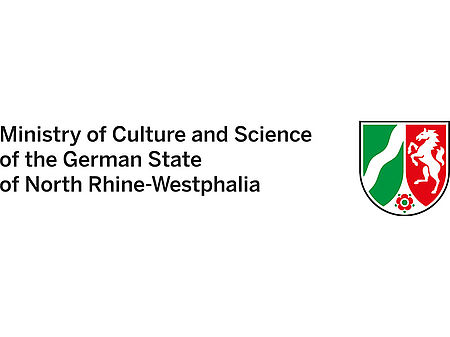Academic referencing and citations: key points to consider
Proper citations are important not only to meet copyright requirements but also to fulfil the principles of good research practice.
Copyright requirements
Section 63 of the German Act on Copyright and Related Rights (UrhG) states that anyone who reproduces the content of a work in letter or spirit must make this clear and identify their sources. This applies both to the reproduction of content of text documents as well as that of other copyrighted works including, for example, research data, software code, illustrations, graphics, photographs, website content, film material and images.
In addition, the right to quote passages from other works under Section 51 of the same Act sets out a narrow framework for referencing works in a scholarly context:
- The content of other works may only be reproduced to substantiate a statement (reproducing content without comment purely for the purposes of illustration and decoration is therefore not permitted).
- The length of the quotation must be proportionate.
- No changes may be made to verbatim reproductions.
Any reproduction of content that goes beyond these limitations requires prior approval – in other words, the permission of the rights holder/content creator must be sought. Even if such permission is granted, it is still obligatory to cite the corresponding source. The rights holder concerned will generally give some indication of how they wish their work to be referenced. Whether permission is provided in writing or in an electronic format, it is important to keep it on file.
Major scholarly publishers provide information on their website about how to obtain the rights to works they have published.
When it comes to reproducing and referencing photographs, reproductions, works of the visual or performing arts, music or literature, there are other aspects that need to be taken into account in addition to those mentioned above. We recommend consulting an appropriate expert in the field. See the link on the right for more information on the correct academic referencing of illustrations and photographs.
Good research practice
Good research practice requires that the author and source be cited in the case of verbatim and paraphrased reproduction. This also applies to content reproduced from your own previously published works. Failure to identify copyright-protected material from your own or others’ works is considered to be plagiarism and is regarded as scientific misconduct. In the case of verbatim citations, you must also apply the principle of proportionality: for example, reproducing text passages from your own or others’ works without adding any contribution of your own is also considered to be misconduct, even if the text passages are properly cited.
Violations of good research practice are likely to lead to sanctions.
When must I include a citation?
As a rule of thumb, you should include a citation whenever you draw or build on the results of your own or others’ work. However, it is not necessary to include citations when building on knowledge that you can safely assume is known by all the members of a scientific community, such as the theory of relativity in physics.
Citations must also be included for non-scientific and informal sources such as websites, reports, blog posts, forum entries, and so on.
You should also make it clear if you are citing from unpublished manuscripts, including your own, which are still in the peer-review or publication process. Depending on the stage these publications have reached, you should reference the journal to which the publication has been submitted or provide whatever bibliographic data is available.
If you are building on knowledge acquired from conversations or email exchanges, you should also make this clear, though it is not then necessary to include the source citation in your bibliography.
Wherever possible, you should consult and cite original sources, though in practice it is also common to site compact summaries in certain contexts, for example in the form of reviews. The disadvantage of this approach is that you have to trust that the source you are citing correctly compiled the results from their original sources.
In the case of books, always cite the edition you consulted.
If the article you are citing is an open-access version that was self-archived in a repository after publication under the green open-access model, the document itself and/or the associated metadata will contain citation information or references to the publisher’s version of record.
The situation is similar in regard to preprints, in other words manuscripts that have been made accessible prior to peer review either via a repository or on a preprint server. If you wish to use preprints that have not yet been peer-reviewed, you should be careful to check whether this is both sensible and desirable in the particular context and whether there are any additional rules on how these should be cited. Some journals have specific requirements in this respect.
Efforts are currently underway to draw up a list of basic requirements for citing research data, software and code in order to ensure these are referenced in a uniform and consistent manner. Advice on how they should be cited – assuming they are relevant to your particular discipline – can be found in the information provided to authors by academic journals. Some platforms, such as Zenodo, also provide citation suggestions.
In general, then, the importance of citing the sources you have used as the basis for your work stems both from the copyright rules on referencing other works and from the principles of good research practice. By implication, this also means that inflating a text through the use of unnecessary citations could also be considered as scientific misconduct, especially if an author attempts to increase their own citation rate or that of other authors by inserting numerous inappropriate citations.
Citation styles
A citation style defines how you should refer to other works in your manuscript and sets out the rules you should follow when formatting citations. Every discipline, institution, faculty and journal tends to have its own guidelines and preferences. We recommend enquiring in advance whether any particular requirements must be met, especially when submitting manuscripts to journals or conferences and when preparing dissertations and doctoral theses.
Scholarly journals publish their requirements on their website, typically on the page that provides information to authors or instructions on preparing your manuscript. In the case of dissertations and doctoral theses, we recommend asking your doctoral supervisor or checking with the examination office.
Detailed guides are available on citation styles that are widely used in specific disciplines; many of these also include information on specific requirements that must be met in the discipline concerned (e.g. references to the active ingredients of drugs in the context of medicine). One example is the AMA Manual of Style.
It is important to remember that citations and citation styles also offer the practical benefit of helping readers to track down sources in order to check the arguments presented in a publication or find out more about a topic. That is why it is so important to provide as many details as possible so that readers can easily find your source. Deliberately omitting details or providing incorrect citations in order to make it harder for readers to check your sources – or to prevent them from finding them at all – may be considered as scientific misconduct.
Reference management software
Reference management software packages help authors record and store bibliographic references to the literature and other sources they need to write a manuscript; they also help authors to use and format a citation style consistently and to avoid plagiarism.
There are various packages on the market, which tend to differ in the following respects:
- web-based or desktop-based;
- free or commercial product;
- number of citation styles supported;
- number of publication types supported;
- import/export functions;
- options for organising knowledge (e.g. the ability to assign your own keywords or save text passages);
- ability to automatically save full-text PDFs;
- options for collaborative working;
- connection to text administration.
As well as offering a full paid version, many commercial products also offer time-limited or feature-limited trial versions.
The decision on which reference management software is best for you will depend on your style of working and on which options are available (e.g. software packages licensed by your institution). Various libraries have published product comparisons online which they update on a regular basis; these can provide helpful guidance on selecting the right product. Examples include the “Comparison of Reference Management Systems" published by the Saxon State and University Library Dresden (SLUB), and the “Software Comparison Guide” published by the University Library at Technical University Munich.
In situations where several authors are working on the same manuscript, it is advisable for everyone involved to use the same software package or for one of the authors to take responsibility for formatting references in citations and in the bibliography.
Reference management software is particularly useful when it comes to collecting and organising sources on a specific topic or as part of a specific publication project. Many literature search databases allow users to automatically export bibliographic references, which can then be directly imported into the software package. The software can also use identifiers such as DOI and ISBN and/or plug-ins to import individual bibliographic references to sources found elsewhere. Alternatively, users also have the option of entering bibliographic references manually by filling out the information required for the relevant type of publication.
Some software also offers the option of enriching references with your own keywords, thoughts, quotations or excerpts from the text, which can help provide the manuscript with a preliminary structure. This approach of directly linking your own reflections to the citations on which they are based is also a good way to help prevent plagiarism.
Another advantage of reference management software is that it enables you to format citations and bibliographies automatically and consistently on the basis of the selected citation style. It is important to note that not all the software packages supports every citation style or publication type, and that sometimes not all the necessary information is transferred to the software during the import process. We therefore recommend looking through the manuscript one last time to manually check that everything is correct.
See also
Copyright and academic research: what are the key issues that affect you as an author?
An introduction to good research practice, research misconduct and academic integrity
Disclaimer
Important note: The information and links provided here do not represent any form of binding legal advice. They are solely intended to provide an initial basis to help get you on the right track. ZB MED – Information Centre for Life Sciences has carefully checked the information included in the list of FAQs. However, we are unable to accept any liability whatsoever for any errors it may contain. Unless indicated otherwise, any statements concerning individual statutory norms or regulations refer to German law (FAQ updated 04/2022).
Contact

Dr. Jasmin Schmitz
Head of Publication Advisory Services
Phone: +49 (0)221 999 892 665
Send mail
References
Act on Copyright and Related Rights of September 1965, last amended on 23 June 2021 (BGBl. I S. 1858), Bundesministerium für Justiz. (accessed 29/11/2022)
Verch, U. (2022). Das Bildzitat – Fotos und Abbildung richtig zitieren. Studentisches Magazin der HAW Hamburg, 3(1). (German only)
Leitlinien zur Sicherung guter wissenschaftlicher Praxis: Kodex of September 2019, corrected Version 1.1, Deutsche Forschungsgemeinschaft e.V. (German only)
Table 1: Most common types of research misconduct. In Mousavi, T. & Abdollahi, M. (2020). A review of the current concerns about misconduct in medical sciences publications and consequences. DARU Journal of Pharmaceutical Sciences, 28, 359–369.
Related Links
Smith A.M. et al (2016). FORCE11 Software Citation Working Group, Software citation principles. PeerJ Computer Science 2:e86.
Adam, M. et al. (2021). Comparison of Reference Management Systems. Dresden, SLUB Dresden.
Teichert, A. et al. (2025). Reference Management Software Comparison. Munich, University Library TU Munich.




